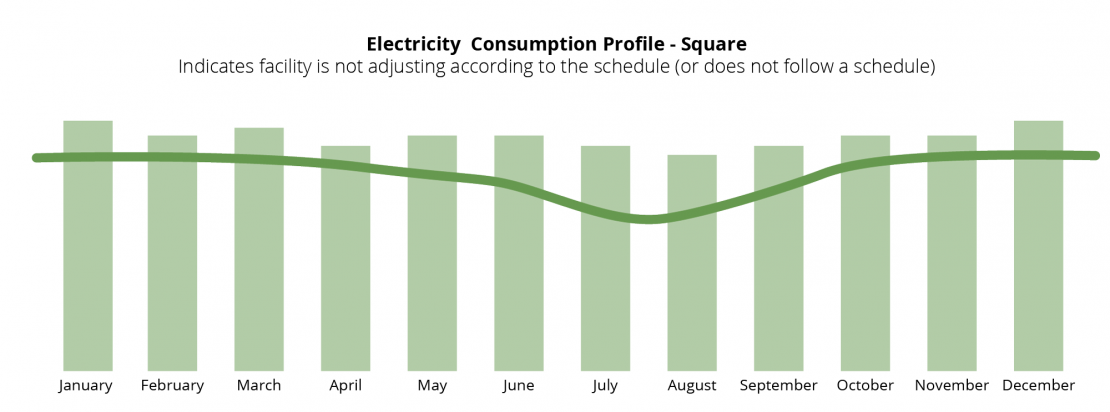Rede’s process to begin recommissioning K-12 school facilities
Recommissioning is a continuous process for facilities that aims to reduce energy and improve occupancy comfort by refining the building’s operations. The process for recommissioning is monitoring your facilities, analyzing the data and making refinements.
The refinements are typically small changes to existing equipment operation and having the system operate as it was designed, where the payback for upgrades or retrofits is usually under two years. In a previous post, we covered the most common areas of improvement for school facility recommissioning. These top three areas are:
- Scheduling of HVAC systems
- Integrating upgrading into existing systems
- Eliminating opposing operations
As common as these three improvements are, no two schools are the same. Marco Bieri, Efficiency Engineer at Rede, has a consistent process to identify the first steps for recommissioning school facilities.
The recommissioning process begins by looking at the energy consumption (or the energy going into a facility), but the potential for improvements comes from reviewing how the energy is being used.
Just like a financial advisor reviewing a budget, monitoring the money going in is simple. Understanding where the money is being spent is more complex but far more informative.
The goal of recommissioning is optimizing when equipment runs and adjust according to the facility’s usage and time of the year.
“That’s the big thing about recommissioning – only running the equipment when needed,” explains Bieri.
By understanding the purpose of the individual components in a facility, you can calibrate the equipment to function the way it was intended.
You can follow these steps to find opportunities to save money and energy in your own schools.
Step 1: Look at your energy bills
Use the data already collected by utility providers. A building’s energy consumption is the first clue to how well a facility is operating and provides the baseline for consumption.
Review the monthly billed energy usage graph and see if it is similar to a rectangle.

Sample annual electricity consumption that indicates the facility is following a schedule.

Sample annual electricity consumption that indicates the facility may not be following a schedule.
“As simple as it sounds – if you look at the electricity profile and utility bills by month and it’s a big rectangle, then that means the school is not reacting to the average school’s occupancy scheduled,” says Bieri.
A consistent energy consumption means the facility is not adjusting according to the building automation schedule (or it doesn’t follow a schedule).
“It’s simple in a sense. It shows that some things are not turning on or off as occupancy and facility demand vary over time and over seasons.”
Step 2: Review the building’s schedule
Investigating the functionality and granularity of the schedule (whether your energy bills show a rectangle or not) is helpful to determine if it is performing optimally.
“The first and foremost thing is equipment scheduling,” says Bieri.
“Does the building have scheduling capability, what schedule controls what equipment, and is the schedule actually controlling the equipment?”
There is a huge potential for savings if the scheduling has any issues or is not optimized. Finding a problem will result in a huge reward in ongoing energy savings by resolving or updating the schedule.
In one facility, Bieri found an error in the scheduling thatresultedin annual savings of $40,000 or 35% when resolved. The first clue was an anomalously large utility bill for the elementary school given its size. Diving into the automation code exposed a one-line error that caused the three primary ventilation systems to operate constantly.
Opportunities exist from not only solving errors but finding opportunities for optimization based on school holidays and long weekends. A school district in British Columbia saved over $4,500 in 15 elementary schools and eight secondary schools by adjusting its schedules for spring break.
Step 3: Figure out what, why and when equipment runs
“Just because a schedule is present doesn’t mean that the equipment follows it,” says Bieri.
“Take a physical walk through a mechanical room or virtually through the BAS after hours – the findings can surprise you.”
Equipment may be functioning constantly due to broken and disconnected timeclocks, BAS linking issues or server upgrade issues.
Step 4: Investigate problem areas
Another clue are trouble areas in your facility that have consistent problems. This could be a classroom that is always too warm or a school wing that tends to feel stuffier than the rest of the facility due to poorer ventilation.
“I talk with the people that run the building and usually there’s a spot that requires a lot of maintenance,” notes Bieri.
“This means it is not running as designed – so there is an opportunity for improvement. No one want to be hassled with occupancy complaints so often equipment is sometimes ran in excess.”
Resolving problems that your maintenance teams routinely face will not only save electricity and fuel, but it will save employee time and headaches.
Step 5: Improve operator schedule confidence
If your job has you travelling from school to school, Bieri recommends discussing the state of facilities with the staff that are there every day. They are the experts of that school’s equipment and problem areas.
Understand who controls the schedule and their degree of trust for the facility’s schedule. Without that trust, the schedule may be ignored and useless. It is every commissioning agent’s job to build confidence for the schedule through education and discussions.
“The people on site have a lot of information that you can’t get from a computer or facility drawings,” says Bieri.
“Just talking to them, you will be able to figure out a lot of issues.”
Are you in the process of recommissioning your school facilities (or just getting started)? Contact Rede for custom recommissioning advice to improve the efficiency of your own facilities.
